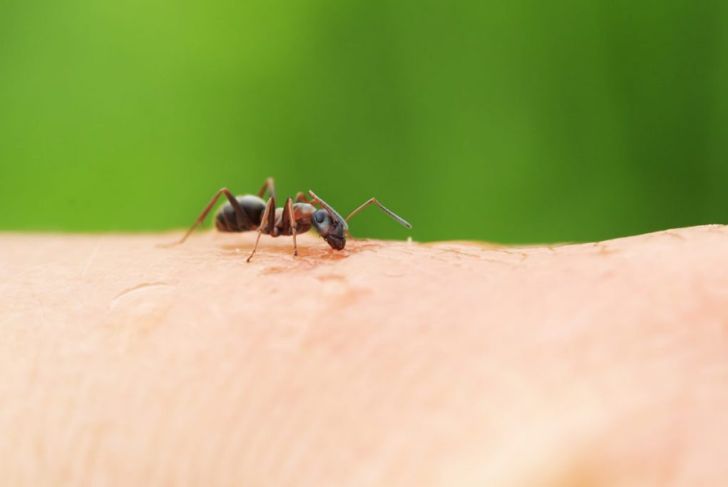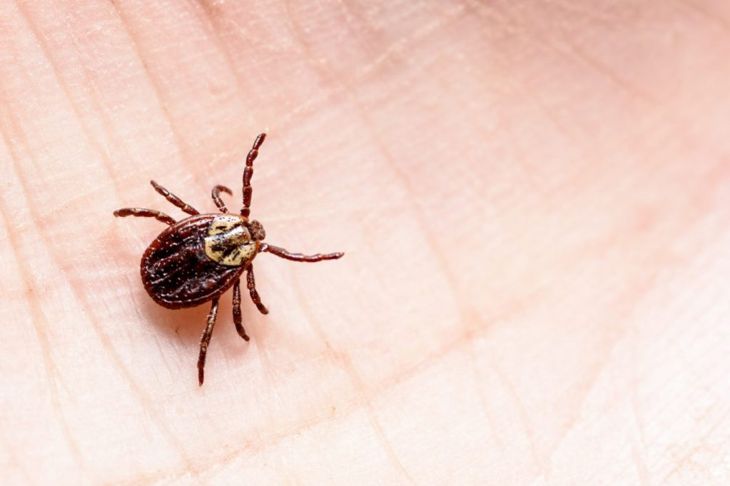Ekbom syndrome is the sensation of bugs or parasites on the skin that aren’t there. People with this psychological condition physically feel bugs on their bodies similar to the pins and needles of restless leg syndrome. The difference is, people with Ekbom’s truly believe bugs reside beneath their skin. This rare syndrome affects only about seven percent of the population or 100,000 for every 1 million people. It has many causes including organic disease, mental disorder, and medication or drug side effects.
History of Ekbom Syndrome
The first documented case of Ekbom’s is from 1894, though it did not receive its current name until Swedish neurologist Karl-Axel Ekbom published accounts in medical papers of specific cases he had encountered in the 1930s. The neurologist is also known for his work on restless leg syndrome.
Ekbom Syndrome and Formication
Formication is the medical term for a creepy-crawly sensation on or underneath the skin. It comes from the Latin word for “ant.” Sometimes, the feeling is itchy and causes incessant scratching. Usually, people with formication know there are not really any bugs on their skin. Doctors apply the diagnosis of Ekbom syndrome when the person believes that parasites or bugs are there.
Diseases that Cause Ekbom Syndrome
Diseases and organic health issues can cause Ekbom syndrome. One of the most common causes is menopause when the body faces hormone withdrawal. Kidney disease, anemia, mercury poisoning, skin cancer, diabetes, Lyme disease, and shingles can also prompt the development of Ekbom syndrome. All of these conditions can also cause more minor formication.
Psychiatric Causes of Ekbom Syndrome
It is considered a mental disorder — many of the causes come from the psyche. Anxiety, depression, and bug phobias can all lead one to believe real parasites cause the itchy sensation on the skin. Those with hypochondria, a disease that makes people believe they are seriously sick, can also have Ekbom syndrome.
Ekbom Syndrome and Drug Abuse
According to a paper by Daniel Rusyniak, MD, it can also come from drug abuse. Users of cocaine or methamphetamine can get the “meth mites,” another term for formication. Chronic users might subsequently develop Ekbom’s syndrome. Withdrawal from certain medications and alcohol can also bring about a condition where patients believe they see the insects, not just feel them.
The Matchbox Sign
One way doctors diagnose Ekbom’s is through something called the matchbox sign. The individual is asked to bring pieces of skin or small objects such as dust specks to the appointment as proof that the parasites exist. The clients usually keep these items in small boxes, hence the name. People with the syndrome may collect these items compulsively.
Women and Ekbom Syndrome
Ekbom Syndrome appears to affect women more often than men, particularly those over the age of 40. This could be because of the hormone changes concurrent with menopause. Elderly men and women with social isolation also make up a large percentage of those affected.
Delusional Parasitosis
From 2001 to 2007, a Mayo Clinic study focused on 108 people with Ekbom syndrome. The study took skin biopsies and examined subjects thoroughly for actual parasites or bugs. None were found. The study concluded the sensation of bugs crawling on the skin was delusional parasitosis, the medical term for the idea that the bugs are real.
Treatment for Ekbom Syndrome
Ekbom syndrome is treated as a mental disorder, and antipsychotic medications are often prescribed to combat the delusions, which work by suppressing the erratic production of dopamine in the brain. Unfortunately, if the individual refuses to admit the bugs are real, they are unlikely to take medication for a mental disorder.
Ekbom Syndrome and Self-Harm
People with Ekbom syndrome also tend to self-harm. The itching sensation makes them scratch, which can cause open wounds that may become infected. Picking at the skin can also create lesions that won’t heal properly. Many secondary complications can arise from this reaction to the syndrome.

 Home
Home Health
Health Diet & Nutrition
Diet & Nutrition Living Well
Living Well More
More




















